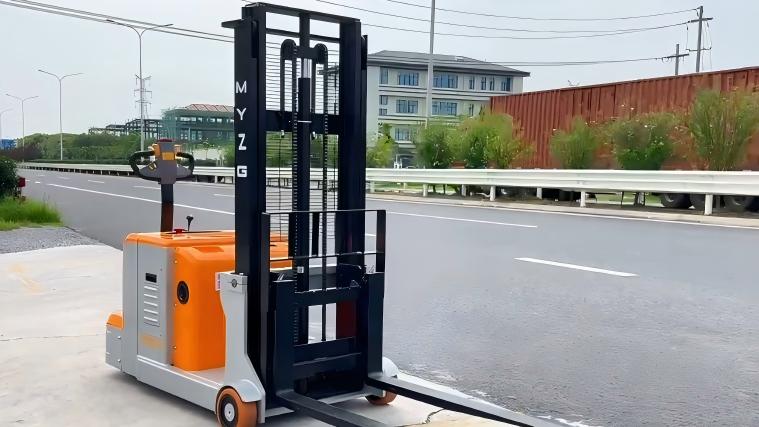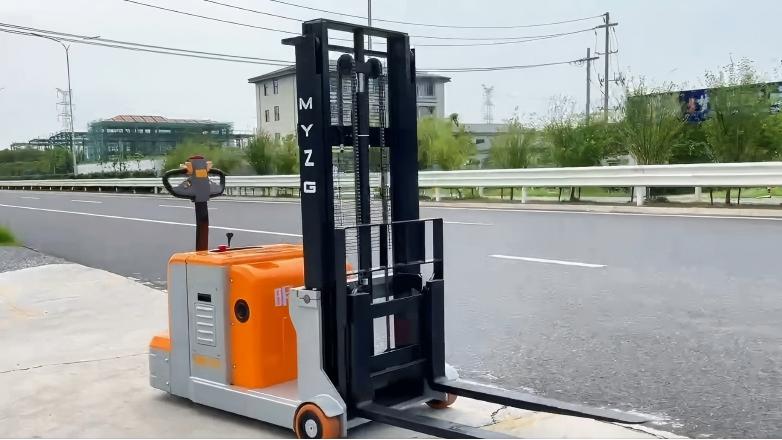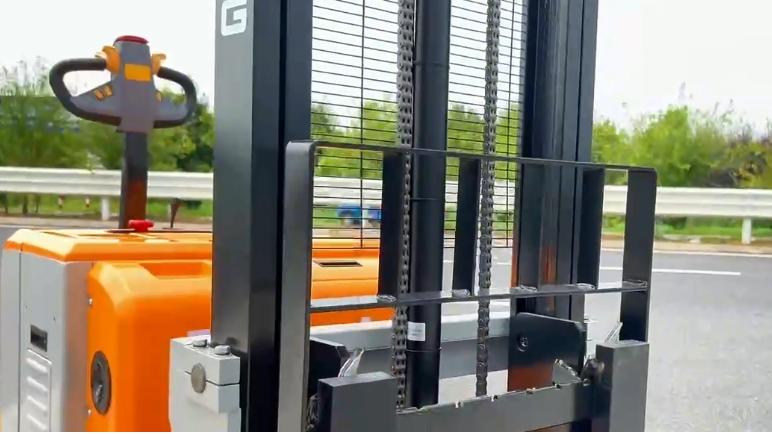Why Does My Electric Pallet Truck Lose Power Under Load?
You hit the “lift” button and the forks rise briskly when the pallet truck is empty. Slide a 2 500 lb load under the forks and suddenly the truck crawls, the LEDs dim, and the battery gauge drops two bars in ten seconds. Sound familiar? Power-loss under load is the most common complaint on electric pallet trucks, and it costs warehouses real money—lost cycles per hour, overtime hours, and premature component failure. The good news is that 90 % of these failures follow predictable patterns rooted in four domains: battery health, motor/controller limits, hydraulic efficiency, and mechanical drag. This article walks you through each domain step-by-step, giving you quick field tests, specification limits, and a preventive-maintenance calendar that keeps the truck pulling rated amps without sagging under load.
Energy path: 24 V battery pack → main contactor → motor controller → 1.2 kW traction motor and 2.2 kW hydraulic pump motor → planetary gearbox → polyurethane drive wheel OR hydraulic pump → lift cylinder. Key sensors include Hall-effect throttle, pressure transducer on the lift circuit, encoder on the motor shaft, and battery-current shunt. The controller uses PWM to vary motor speed; when demand exceeds programmed current, the truck “folds back” to protect itself, producing the symptom we call “power loss.”
Lift: forks rise slowly, stall halfway, or require operator to pump handle. Travel: truck slows on 3 % ramp but is fine on level floor. Electrical: LED cluster dims, fault code “E-07” or “Undervolt,” hot motor casing. Hydraulic: pump whines, oil temperature > 70 °C, foaming in reservoir. Mechanical: squealing brake, flat-spotted drive tire, high push-force to start roll.
Aging Lead-Acid: After 1 200 cycles, plates sulfonate and capacity drops 30 %. A 24 V pack that once delivered 180 Ah now gives 125 Ah; under 150 A draw voltage collapses below 20 V. Check specific gravity—if any cell < 1.220 SG, equalize charge or replace. Lithium Pitfalls: BMS may limit discharge to 1 C; a 100 Ah pack therefore caps at 100 A, insufficient for a 150 A pump inrush. Cell imbalance > 50 mV triggers cut-off; balance cells quarterly. Low-temperature (< 0 °C) increases internal resistance ten-fold—store indoors. Cables & Connectors: A 95 mm² cable with 0.5 mΩ resistance dissipates 11 W at 150 A; corroded lugs can add 2 mΩ and drop 3 V. Torque Anderson SB-175 lugs to 16 N·m and coat with dielectric grease. Charger Issues: A charger calibrated 2 % low delivers 27.4 V instead of 28.0 V—battery never reaches 100 %. Calibrate annually; avoid opportunity charging that keeps SOC between 40 % and 80 %, which accelerates sulfation.
Brush Wear: DC motors lose 20 % torque when brushes drop below 6 mm. Check length every 500 h; replace in pairs. Hall-Sensor Drift: Sensor offset > 5° causes controller to limit current. Use laptop to read live Hall counts; recalibrate if skewed. Thermal Rollback: Controller reduces current when heat sink hits 85 °C. Verify cooling fan spins freely; clean dust from fins. Contactor Pitting: Pitted contacts add resistance and heat. Measure voltage drop across contactor—if > 0.3 V at 150 A, replace tips.
Pump Wear: Gerotor clearances > 0.15 mm reduce volumetric efficiency. Bench-test flow at 2 000 psi; if < 80 % of spec, overhaul. Fluid Condition: ISO 46 oil thickens below 10 °C. Switch to ISO 32 winter blend or install tank heater. Moisture > 300 ppm causes cavitation—replace oil every 2 000 h. Cylinder Bypass: Lift cylinder rod seal leakage > 10 mL/min drops pressure. Perform hold-down test: if forks sink 5 mm in 5 min, reseal cylinder. Clogged Strainer: Vacuum > 10 inHg at pump inlet indicates restricted strainer. Replace 100-mesh suction filter yearly.
Drive Tire: Worn tire diameter drops from 250 mm to 230 mm, raising rolling resistance 8 %. Replace when tread < 2 mm. Brake Drag: Spring-applied brake gap should be 0.8 mm; adjust eccentric cam if gap < 0.3 mm. Gearbox: Over-greased planetary gears increase viscous drag. Fill to 50 % of cavity volume, not 100 %.
Cold weather: Battery internal resistance doubles; hydraulic oil viscosity triples. Store truck overnight above 5 °C. Ramp grades: A 5 % ramp adds 250 N rolling resistance per ton; ensure battery is > 70 % SOC before shift. Overloading: A load center 600 mm instead of 500 mm increases moment 20 %, exceeding controller current limit.
Static battery voltage ≥ 24.8 V? 2. Under 150 A load, sag ≤ 3 V? 3. Hydraulic pressure at relief valve ≥ 2 500 psi? 4. Motor case temp ≤ 75 °C? 5. Wheel free-spin torque ≤ 8 N·m? If any step fails, drill down using a multimeter, pressure gauge, infrared thermometer, and service laptop.
Weekly: check electrolyte level, torque battery bolts to 10 N·m. Monthly: load-test battery at C/5 for 5 min; voltage drop < 1 V. Quarterly: change hydraulic filter, inspect brushes, measure brake gap. Annually: calibrate charger, balance lithium cells, grease gearbox with NLGI #1.
Case A: 3PL warehouse—truck lost 40 % lift speed. Load-test revealed 24 V pack sagging to 18 V. Replaced 5-year-old AGM and restored 100 % performance. Case B: Retail DC—intermittent power cut. Found 50 mm² cable lug oxidized; cleaned and torqued, drop disappeared. Case C: Cold-storage—slow lift below 5 °C. Switched to ISO 32 low-temp oil and installed 100 W silicone heater; cycle time improved 25 %.
Battery: if capacity < 70 % of label Ah, ROI favors replacement over rebuild. Controller: new OEM unit $1 200, repair $600—repair if < 3 years old. Motor: armature rewind $400 vs new $900—rewind if commutator undamaged.
Nine times out of ten, power-loss under load traces back to a tired battery, degraded hydraulics, or dragging brakes. Use the symptom checklist and flowchart to isolate the root cause in minutes, not days. Then lock in a disciplined PM schedule—weekly battery care, monthly hydraulic checks, quarterly motor inspection—to ensure the truck delivers full rated torque every shift.
Post time:Jul.14.2025



